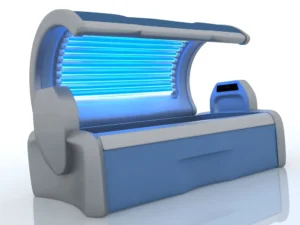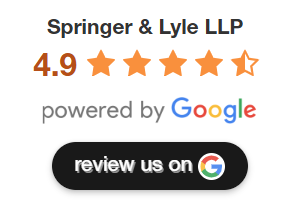Research Worldwide Shows Tanning Beds Present Risk of Cancer~7 min read
 The following report from Bloomberg Businessweek informs us how study after study, all over the world, demonstrates health hazard caused by exposure to ultra violet rays produced by tanning booths, beds, etc. Any exposure to UV rays causes a weakening of the immune system spurring susceptibility to all types of cancer, especially to the three main forms of skin cancer including the number one danger, melanoma. Read the entire report below posted by Jason Gale on December 03, 2012.
The following report from Bloomberg Businessweek informs us how study after study, all over the world, demonstrates health hazard caused by exposure to ultra violet rays produced by tanning booths, beds, etc. Any exposure to UV rays causes a weakening of the immune system spurring susceptibility to all types of cancer, especially to the three main forms of skin cancer including the number one danger, melanoma. Read the entire report below posted by Jason Gale on December 03, 2012.
Teenage girls trading the risk of deadly melanoma for a year-round tan have helped spur a global backlash against the sunbed industry.
Health officials from Brasilia to Sydney are banning tanning salons amid evidence that they cause malignant lesions. Use of tanning beds causes all three types of skin cancer, especially for people younger than 25 years, a study published in October from the University of California, San Francisco said.
Doctors say the research, published in the British Medical Journal, should prompt tougher warnings on ultraviolet radiation-emitting tanning machines. The salons support $5 billion in U.S. annual economic activity, according to the Food and Drug Administration. In May, Vermont followed California, banning teens under 18 from indoor tanning. In Europe, laws prohibiting teens from tanning beds have been enacted in 22 countries, 18 of them since 2009. Age limits in Australia may have forced the closing of a third of sunbed operators there.
“We’re seeing an uptick in melanoma cases and deaths among young women,” said J. Leonard Lichtenfeld, deputy chief medical officer with the Atlanta-based American Cancer Society. “Are we going to look back in 15-20 years from now and wish we’d been more forceful about moving this process forward?”
The FDA has been reviewing its classification of tanning beds since 2010. The machines are subject to general controls such as establishment registration requirements and quality system regulation, Michelle Bolek, a spokeswoman said.
Important Issue
“This is an important public health issue and we’re committed to providing consumers with an update soon on the agency’s next steps on tanning bed regulation,” she said.
For the moment, however, the FDA ranks tanning machines as class-I devices– as safe to use, in other words, as elastic bandages. Few other health groups share that position. The World Health Organization’s International Agency for Research on Cancer in 2009 added ultraviolet radiation from tanning machines to a danger category of carcinogens that includes radon and plutonium.
Indoor tanning before age 35 increases the risk for melanoma by 75 percent, the U.S. Centers for Disease Control and Prevention said in a report in May.
Brazil banned cosmetic tanning three years ago. Two Australian states have enacted legislation to ban salons by 2015 and a third plans to introduce a similar bill within months.
Royal Philips Electronics NV (PHIA), Europe’s largest maker of medical equipment behind Siemens AG (SIE), was a major supplier of products for UV tanning until recently. The Amsterdam-based company discontinued its product portfolio between 2009 and 2010, said Jeannet Harpe, a spokeswoman for Philips Lighting.
‘More Tainted’
“The business is becoming more and more tainted as the evidence becomes clearer,” said Craig Sinclair, head of the WHO’s Collaborative Centre for UV Radiation in Melbourne.
The number of indoor tanning operators in the city plunged 67 percent since a law in 2008 restricted access to adults 18 years and older. Shutting down solariums completely would avoid one in six melanomas in Australians ages 18 to 29, according to Victoria state’s Cancer Council.
At Body Bronze, a chain of 22 salons in Melbourne, a casual 8-minute session in a tanning bed costs A$15 ($16), while a package of 50 sessions goes for A$450, according to a pricelist available at an outlet in Prahran, an inner-city suburb.
Every day in the U.S., tanning beds are used by more than 1 million people, mostly Caucasian women ages 16 to 29, according to the American Academy of Dermatology. Of the 28 million Americans who go to a tanning salon at least once a year, 2.3 million are teens.
Beating Mother Nature
More than 3.5 million skin cancers in 2 million people are diagnosed annually in the U.S., according to the academy, a doctors group in Schaumburg, Illinois. This year, 81,240 melanoma cases will be diagnosed and 12,190 people will probably succumb to the malignancy, the American Cancer Society estimates. Women have a 1 in 377 chance of melanoma by age 39. For men, it’s 1 in 677.
Ninety percent of all skin cancers are associated with radiation exposure mainly from the sun, according to the International Skin Cancer Foundation in New York. The use of tanning beds compounds the impact of sun exposure because the radiation they emit is stronger than the long-wave UVA and shortwave UVB rays that reach the earth naturally.
UVA output from indoor tanning devices is four times higher and UVB output is twice as high as noon sunlight in Washington D.C. during summer, the CDC said in its May report.
“Every bit of extra UV exposure increases risk,” said Bruce Armstrong, professor of public health at the University of Sydney.
Burn Capital
Both types of radiation can weaken the immune system, increasing vulnerability to cancer as well as to other diseases, according to a study in the British Medical Journal in July. Tanning lamps induce the types of DNA damage to the skin associated with cancer, the researchers said.
“Each person has a certain amount of capital that protects them from cancer,” said Beatrice Secretan, a scientist at the WHO’s cancer-research agency. “If you burn that capital too quickly, you are in danger of developing cancer. The lighter the skin, the more at risk you are.”
A 2010 survey found 5.6 percent of American adults had used indoor tanning in the previous 12 months. Use was highest among young white women, with almost one in three in the 18-to-25- year-old age group having tanned indoors during the prior year. A 2010 study of 1,167 melanoma cases in Minnesota found indoor tanning use was common among 63 percent of patients.
Squamous Cell Carcinoma
Catherine Olsen, a senior research officer with the Queensland Institute of Medical Research in Brisbane, Australia, reviewed the research in the British Medical Journal in October in which scientists analyzed pooled data from 12 studies and found exposure to indoor tanning increased the risk of developing squamous cell carcinoma by 67 percent and basal cell carcinoma by 29 percent.
The so-called meta-analysis yielded “irrefutable” evidence that sunbeds caused all three types of skin cancer, not just the most aggressive one known as melanoma, she said.
The emerging research on the harm from indoor tanning is beginning to resonate in the U.S., where in cities such as San Diego, sunbed salons outnumber Starbucks Corp. (SBUX) coffee outlets and McDonald’s Corp. restaurants. Thirty-three U.S. states have laws restricting access to indoor tanning under a certain age — typically 14, 16 or 18 years, the CDC said in May.
“It’s a hodge-podge across the United States,” said Martin Weinstock, chief of dermatology at the Providence VA Medical Center in Rhode Island.
‘Political Power’
“The tanning industry does have a lot of a money and, apparently, political power,” said Weinstock, who is chairman of the American Cancer Society’s skin cancer advisory committee. “Though they don’t have much in the way of scientific argument, they do their best to obfuscate.”
One example came earlier this year after researchers at England’s Leeds Institute of Molecular Medicine wrote a letter to the editor of the International Journal of Cancer in June saying they had found no statistically significant evidence that sunbeds increase melanoma risk in a study. The research wasn’t designed to register a small association between the two, only a large one, said co-author Timothy Bishop, chairman of the Leeds Cancer Research UK Centre.The Tanning Shop, a U.K. chain of 80 salons, responded to the findings by releasing a statement hailing “definitive results from clinical research” that proved “there is no link between sunbed use and melanoma.”
The Leeds researchers don’t support that interpretation of their findings, said Bishop, adding that he was “extremely disappointed” with the way the study had been portrayed.
Conflicting reports mean “there’s still the perception out there that it’s safer” to tan in a salon, according to Olsen from the Queensland Institute of Medical Research. “But it’s not the case at all.”






